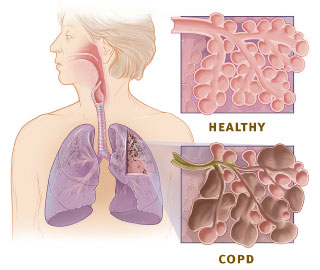Naegleria is an amoeba (single-celled living organism) that can be seen under a microscope. It can cause a very rare, but severe and life threatening infection of the brain called primary amoebic meningoencephalitis.
The amoeba is commonly found in warm freshwater lakes, rivers, and hot springs; and also in soil. Only one species (type) of Naegleria infects people: Naegleria fowleri.
In very rare instances, Naegleria infections may also occur when contaminated water from other sources (such as inadequately chlorinated swimming pool water or heated tap water <47°C).
A 51-year-old woman from DeSoto Parish and a 20-year-old man from St. Bernard Parish, a suburb of New Orleans, died after using Neti pots containing tap water to flush their sinuses. Both became infected with Naegleria fowleri.
Naegleria fowleri enters the body through the nose travelling along the sensory nerve that carries smell to the brain; and cause primary amoebic meningoencephalitis; a brain infection with symptoms similar to those of bacterial meningitis.
Primary amoebic meningoencephalitis is characterized by headache, fever, nausea, stiff neck, confusion, loss of balance, seizures, hallucinations and coma. And if left untreated, the infection can cause death within one to 12 days. The most unfortunate part is that even if diagnosed, the treatment is also not that effective and death rate is 98%.
It can be diagnosed from the fluid that cushions the central nervous system in the bony case called cerebrospinal fluid, put to culture media.
Treatment is by amphoterecin B, an antibiotic that may not help always.
It is better to be in the preventive side tan trying to cure the infection when it establishes in the brain.
The amoeba is commonly found in warm freshwater lakes, rivers, and hot springs; and also in soil. Only one species (type) of Naegleria infects people: Naegleria fowleri.
| Image via Wikipedia |
A 51-year-old woman from DeSoto Parish and a 20-year-old man from St. Bernard Parish, a suburb of New Orleans, died after using Neti pots containing tap water to flush their sinuses. Both became infected with Naegleria fowleri.
Naegleria fowleri enters the body through the nose travelling along the sensory nerve that carries smell to the brain; and cause primary amoebic meningoencephalitis; a brain infection with symptoms similar to those of bacterial meningitis.
| Image via Wikipedia |
It can be diagnosed from the fluid that cushions the central nervous system in the bony case called cerebrospinal fluid, put to culture media.
Treatment is by amphoterecin B, an antibiotic that may not help always.
It is better to be in the preventive side tan trying to cure the infection when it establishes in the brain.







